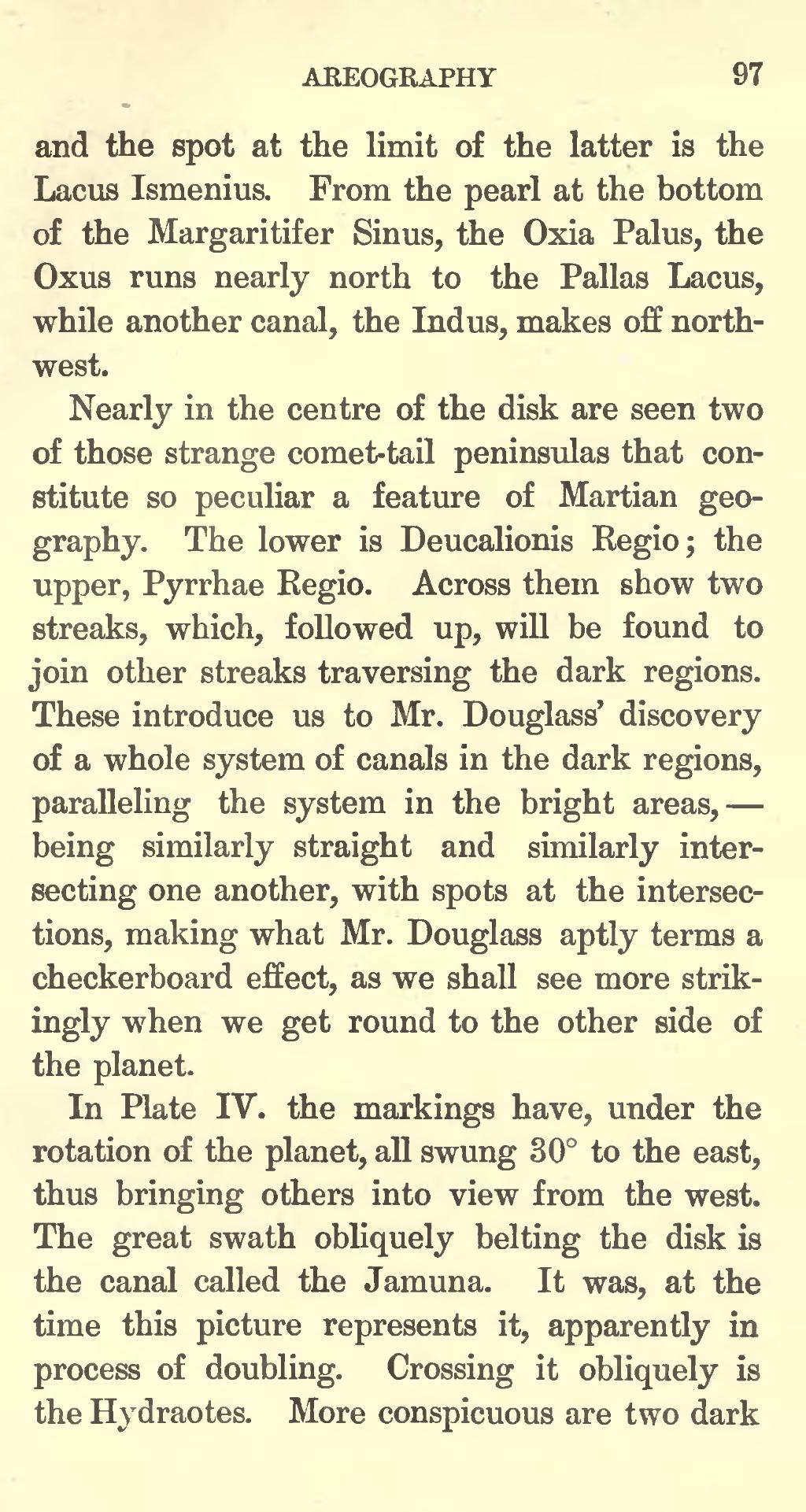and the spot at the limit of the latter is the Lacus Ismenius. From the pearl at the bottom of the Margaritifier Sinus, the Oxia Palus, the Oxus runs nearly north to the Pallas Lacus, while another canal, the Indus, makes off north-west.
Nearly in the center of the disk are seen two of those strange comet-tail peninsulas that constitute so peculiar a feature of Martian geography. The lower is Deucalionis Regio; the upper, Pyrrhae Regio. Across then show two streaks, which, followed up, will be found to join other streaks traversing the dark regions. These introduce us to Mr. Douglass' discovery of the whole system of canals in the dark regions, paralleling the system in the bright areas,—being similarly straight and similarly intersecting one another, with spots at the intersections, making what Mr. Douglass aptly terms a checkerboard effect, as we shall see more strikingly when we get round to the other side of the planet.
In Plate IV. the markings have, under the rotation of the planet, all swung 30° to the east, thus bringing others into view from the west. The great swath obliquely belting the disk is the canal called the Jamuna. It was, at the time this picture represents it, apparently in process of doubling. Crossing it obliquely is the Hydraotes. More conspicuous are two dark
